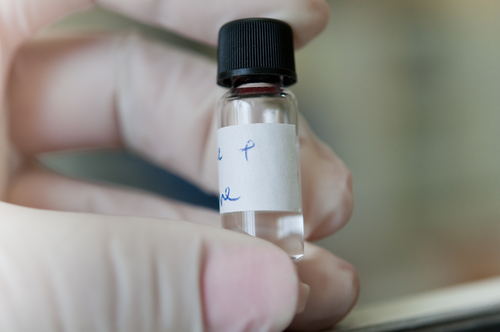Cornell University Researchers Show That ALS Is a Protein Aggregation Disease

 Chemists from Cornell University, using a technique that illuminates very subtle changes in individual proteins, may have found new evidence about the underlying causes of Amyotrophic Lateral Sclerosis (ALS).
Chemists from Cornell University, using a technique that illuminates very subtle changes in individual proteins, may have found new evidence about the underlying causes of Amyotrophic Lateral Sclerosis (ALS).
Professor of chemical biology and chemistry Brian Crane led a study and co-authored a follow-up based on a spectroscopic method that is capable of detecting small changes to copper-containing proteins in solution. Crane and the chemistry professor Jack Freed co-developed this method with Petr Borbat, director of Cornell’s National Biomedical Center for Advanced ESR Technology.
The first work, published in the Biophysical Journal, proved the principle of a technique they used called pulsed dipolar electron spin resonance (ESR) spectroscopy. The second, published in Proceedings of the National Academy of Sciences (PNAS), connected ALS symptoms with protein aggregation, which was the result of a collaboration with The Scripps Research Institute.
ALS is a very complex neurodegenerative disease that has a genetic component that can be inherited. One of the genes related to ALS code a protein called superoxide dismutase 1 (SOD1), which is a crucial copper-containing enzyme whose purpose is to protect cells against the oxidative damage caused by free radicals destruction.
Researchers thought that ALS was a disease caused by the oxidative damage of neurons; that remains true, possibly, according to Crane. However, new and compelling evidence suggest that SOD1 mutations can cause ALS because there is a destabilization in the structure of the SOD1 protein that makes them clumped and aggregated. This is toxic for the cells.
“ALS, in this form, appears to be a protein aggregation disease, much like Alzheimer’s and Parkinson’s diseases,” said Crane in a press release.
Thanks to the ESR spectroscopy, researchers were able to see for the first time the differences between mutated SOD1 proteins and normal SOD1 proteins to find that those mutated had higher tendency to form aggregations. Further, researchers identified that the level of proteins aggregated is related with how severe symptoms are.
Researchers suggest that ALS is more connected to aggregation and the toxicity that results from it, instead of changes in the proteins activity. “Sporadic mutations in SOD1 arise from natural processes, but it’s not really clear if they’re actually going to generate the disease or not,” Crane concluded.






